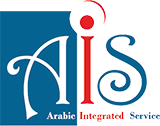Sound and consistent use of terminology lies at the foundation of any effective translation effort. If the use of terminology is ignored, terms may be applied inconsistently across the various documentation of the product.
To ensure consistency across projects, terminology databases are built for the use of project managers, translators, and clients. Terminology set-up can take place:
- A priori, as the first step of the localization project; terminology is extracted and the resulting list of terms is translated. This glossary is then entered in a translation management tool to facilitate access to terminological resources during translation and maintenance of the database.
- A posteriori, as the final step of the localization project; terminology is extracted, translated and entered in a terminology management system to be used for updates of the same project.
Most translation memory suites have integrated terminology management tools that help translators creating multilingual glossaries, thus ensuring terminological consistency across projects. Some of these terminology utilities can be also used separately from the translation memory system and are accessible from other applications.
Of course, this not only reflects poorly on the company and weakens the effectiveness of global communications, but, worse still, may carry a safety or legal implication.
In our experience, the only way to solve this problem is to develop and maintain a central web-based terminological database accessed by all members of an organization and external partners, wherever they may be. This enables authors, translators, reviewers and QA specialists to share a common approach.
Recently, there has been a resurgence of interest by companies, both large and small, in rationalizing their use of corporate terminology. Sadly, there appears to be widespread inconsistency in the use of terminology in documentation that eventually becomes the source text for multilingual versions. For a number of years, we have provided clients with a simple, effective solution for managing both monolingual and multilingual terminology.
